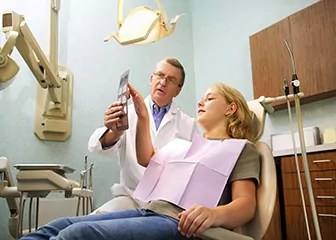
Question: Why isn’t TMJ considered a vestibular disorder? The symptoms I’m experiencing are causing ear pressure and dizziness, but when I went to the ENT, he found nothing wrong with my ears.
Individuals experiencing issues with their jaw joint (TMJ) may be classified as having TMD (temporomandibular disorder). TMD encompasses conditions that affect the TMJ and related structures, such as muscles of mastication. TMD can cause symptoms that include ear pressure, dizziness, headache, and facial pain. Other deficits may include jaw popping, difficulty with mouth movements, and difficulty with eating. TMD is not classified as a vestibular disorder because the origin of symptoms and deficits is different. Here’s why TMD disorders can mimic vestibular symptoms and why they aren’t considered a vestibular disorder per se:
Why TMD Can Cause Ear Pressure and Dizziness
Proximity to the Ear
The TMJ is located very close to the ear structures, including the middle and inner ear. Dysfunction in the TMJ can create referred pain or pressure that feels like it’s originating from the ear.
Inflammation or misalignment in the TMJ can affect nearby structures, causing sensations of ear fullness or pressure.
Shared Nerve Pathways
The TMJ and the ear share innervation from the trigeminal nerve and other cranial nerves. Irritation or dysfunction in the TMJ can send signals that are interpreted by the brain as coming from the ear, leading to symptoms like dizziness or pressure.
Muscle Tension and Balance
TMD often involves tightness or dysfunction in the jaw and neck muscles. These muscles can influence posture and head position, potentially impacting the vestibular system indirectly.
Eustachian Tube Dysfunction
TMD can affect the muscles that help regulate the Eustachian tube (a structure connecting the middle ear to the throat). This can lead to a feeling of fullness or pressure in the ear, even if there’s no structural issue within the ear itself.
Dizziness
TMJ dysfunction and/or muscle tension can affect proprioception (the sense of spatial orientation) in the head and neck, which can contribute to dizziness or imbalance.
Why TMD Is Not Considered a Vestibular Disorder
- Primary Origin: TMD originates in the jaw joint and associated muscles, not the vestibular system (which is in the inner ear and controls balance).
- Indirect Effects: While TMD can influence the vestibular system indirectly (via referred pain, muscle tension, or nerve connections), the root cause is outside the inner ear.
- Treatment Focus: TMD treatment may include all or any of the following: manual therapy to address jaw stiffness, neck stiffness, and muscular tightness; relaxation strategies; stretching; postural exercises; and dental interventions. Vestibular disorders, however, are treated with therapies targeting the inner ear or the brain’s balance centers.
What You Can Do
Consult a TMD Specialist
A dentist or oral and maxillofacial specialist can evaluate your TMJ function and recommend treatments such as a night guard, physical therapy, or bite correction.
Try Physical Therapy
Therapists who specialize in TMD can help relieve muscle tension and joint stiffness, which may reduce ear pressure and dizziness.
Address Postural Issues
Poor posture, especially in the neck and shoulders, can exacerbate TMD and contribute to dizziness.
Stress Management
Stress often leads to jaw clenching or teeth grinding, which can worsen TMD
Revisit the ENT if Needed
Some ENTs specialize in the treatment of TMD; therefore, if ear issues are not found, a second opinion or vestibular testing may be warranted.
Since your ENT found no issues with your ears, TMD could very well explain your symptoms. Treating the TMD might alleviate the dizziness and ear pressure you’re experiencing.
Reviewed by Denise Schneider, DPT
